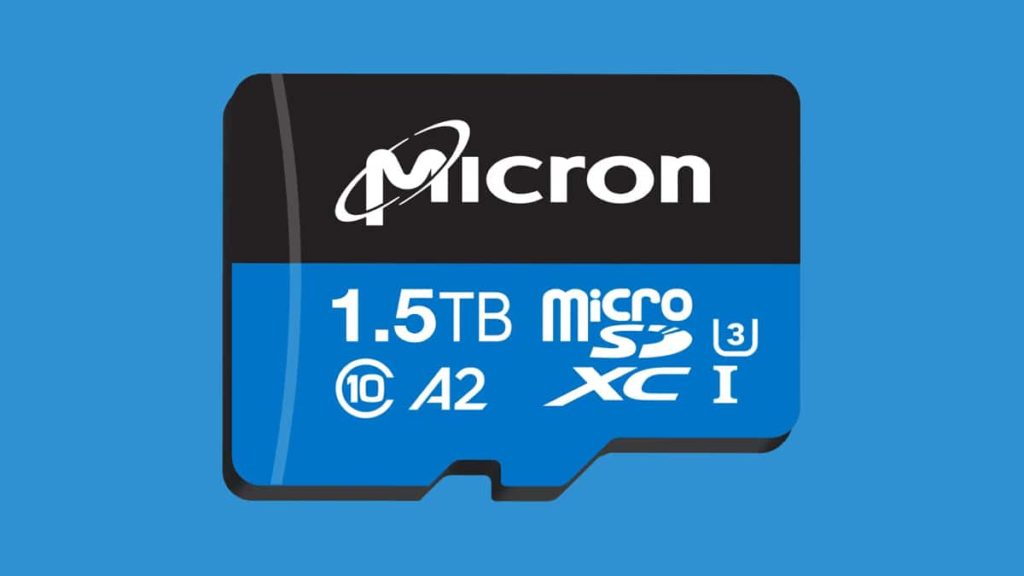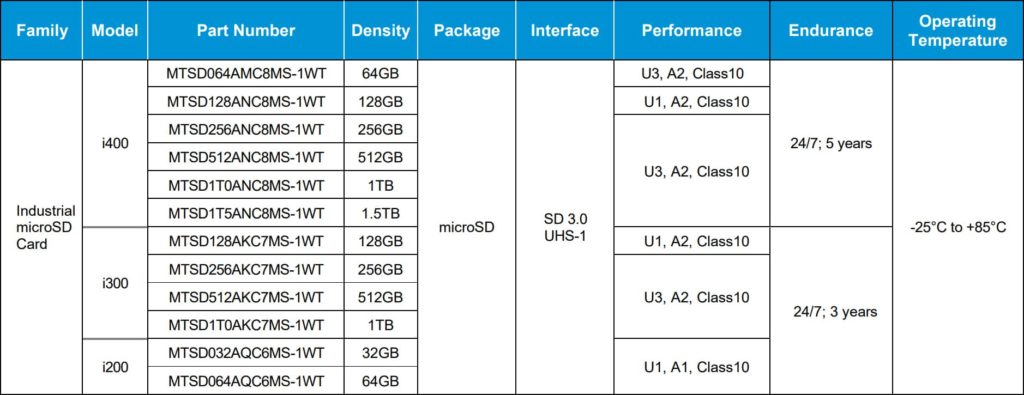
Micron has unveiled the world’s first 1.5 TB microSD card, enabling a relatively enormous amount of storage for smart home security, police body cameras, and the countless other hardware devices that leverage the proprietary non-volatile flash memory card format. Now sampling to customers, the i400 features what Micron has described as an “unprecedented” amount of storage, something made possible with the world’s first 176-layer 3D NAND, which the company also pioneered for usage scenarios that include industrial-grade video security. The i400 is good for up to five years of high-quality continuous 24×7 recording, has the ability to concurrently handle 4K video recording and up to eight AI events per second, and a 2 million hour to mean time failure (MTTF) rating. Micron additionally announced today that its low-power double data rate 5 (LPDDR5) DRAM is now ASIL-D certified, confirming its adherence to strict functional safety standards for use in the automotive industry.
“Micron’s industrial-grade storage is key to helping us protect our customers and communities, from schools to large enterprises, by meeting the most demanding of video retention and security requirements,” said Raj Misra, Verkada’s vice president of hardware engineering. “The latest i400 solution will provide further peace of mind by enabling greater video storage at the edge and faster in-camera AI analytics — important in crises where response time is paramount.”
The substantial 1.5TB density can store up to four months or 120 days of video security media locally, enabling users to optimize what data is stored in the cloud. The high capacity eliminates the need to continuously upload data to the cloud for primary storage, a process that guzzles network bandwidth and operational expenses. Small businesses looking to reduce expensive bandwidth or remote sites — such as cargo ships or oil rigs with limited connectivity — can instead periodically upload data to the cloud for backup while relying day to day on i400 storage at the edge. Bringing primary storage to the edge enables real-time AI analytics and faster decision-making within smart cameras. This speed is especially crucial for critical law enforcement, public health or safety decisions.
Source: Micron

